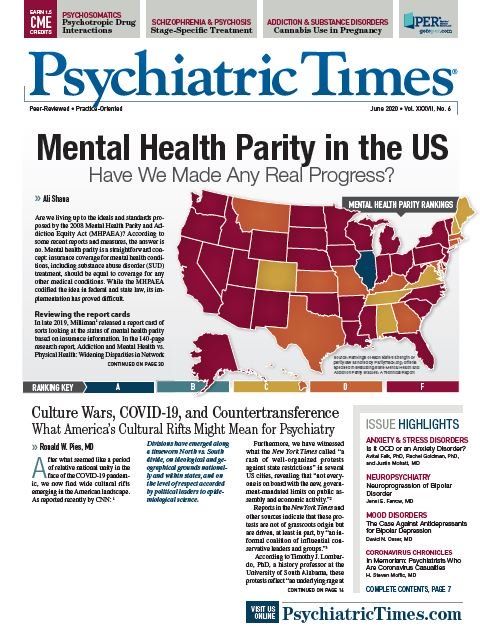Publication
Article
Psychiatric Times
Mind-Body Therapies for the Management of Pain: How Effective Are They?
Author(s):
For the millions of patients whose pain is being treated with opioids, mind-body interventions are proving to be important considerations to ease suffering.

PAIN MANAGEMENT
Fears about the overprescription of opioid analgesics and the opioid epidemic have resulted in initiatives for physicians to prescribe these medications more judiciously. However, new concerns about patients needlessly suffering untreated or undertreated pain have been raised.
Unfortunately, many lay people and even many health care providers still believe that opioids are the optimal treatment for all forms of pain and that there are no good alternatives. Studies, however, have shown that nonopioid pharmacologic therapies and nonpharmacologic therapies can be as effective and, in many cases, even more effective than opioids.
A new systematic review and meta-analysis of mind-body therapies (MBTs) for patients whose pain is being treated with opioids highlights how useful these modalities can be and the importance of considering them when caring for patients suffering with pain.1
The review included 60 studies with 6404 participants. A variety of MBTs were employed, including meditation, hypnosis, relaxation, guide imagery, therapeutic suggestion, and cognitive-behavioral therapy (CBT) depending on the individual studies. The types of pain varied from procedural pain to burn pain to cancer-related pain to chronic pain. The impact of various MBTs on the pain and on the use of opioids were examined.
The findings indicated that meditation, hypnosis, therapeutic suggestion, and CBT were most likely among the MBTs to provide the greatest pain relief with moderate to large improvements. Meditation, hypnosis, and CBT appeared to have the greatest impact on opioid use. The researchers noted that the lack of evidence for the impact of the other MBTs may reflect that there were fewer studies rather than evidence that those MBTs are less likely to have an effect on either the pain or opioid use.
There were also indications that MBTs may provide some benefit for opioid craving and misuse, another reason why their use should be considered for patients on opioids for whom it is believed these medications should be discontinued.
There were differences between the types of pain for which the individual MBTs were studied. Studies that looked at meditation-based therapies primarily focused on chronic noncancer pain while most hypnosis, relaxation, and imagery studies focused on acute, procedural, or cancer-related pain. Whether this provides any guidance as to which type of therapy would be most beneficial for which type of pain is open to question and warrants further study.
It is worth noting that there is a great deal of overlap between many of the MBTs and what might be considered meditation by some could be considered relaxation or even hypnosis by others, so there is often a lack of clear demarcation between them. MBTs are not a magic bullet for the management of pain. They showed a moderate but statistically significant effect on the pain and resulted in a small but statistically significant reduction in opioid use.
In addition to these apparent benefits, MBTs also have one very significant advantage over many of the other treatments for pain: they are essentially free of adverse events. If they are tried and do not provide any benefit, the patient will be no worse off. As with all the other interventions to manage pain, no one can guarantee that MBTs will provide improvement but one can be as close as possible to certainty that they will not have any negative impact on those being treated with them. If the opioid epidemic has taught us anything it is that therapies initiated to help patients can end up having a destructive effect.
There is one very real limitation in the introduction of the MBTs as major treatments for pain. For the most part, in academic centers and hospitals, pain management is primarily considered to be a subspecialty of a single medical specialty—anesthesiology. The only significant exception to this is headache management, which is usually considered to be a part of neurology.
The reality is that few anesthesiologists and neurologists, even those who specialize in pain management, receive much, if any, training in the use of MBTs, nor do most primary care physicians upon whom the management of pain often falls. Thus, most patients with pain are unlikely to come into contact with caregivers who are knowledgeable about MBTs, much less know how to utilize them.
Obviously, the physicians most likely to be trained in the use of MBTs are psychiatrists, and this is one of many reasons why psychiatrists should be more involved in the care for patients with all forms of pain and not just those patients with diagnosable mental disorders.
There is a need for more and better studies on MBTs for pain. However, this can be said of all the other treatments for it. Let us recall that millions of patients have been prescribed opioids for the management of chronic pain although there are virtually no studies demonstrating their efficacy.
Dr King is in private practice in Philadelphia.
Reference
1. Garland EL, Brintz CEE, Hanley AW, et al. Mind-body therapies for opioid-treated pain: a systematic review and meta-analysis. JAMA Intern Med. 2020;180:91-105.
This article was originally posted on February 20, 2020, and has since been updated. -Ed







